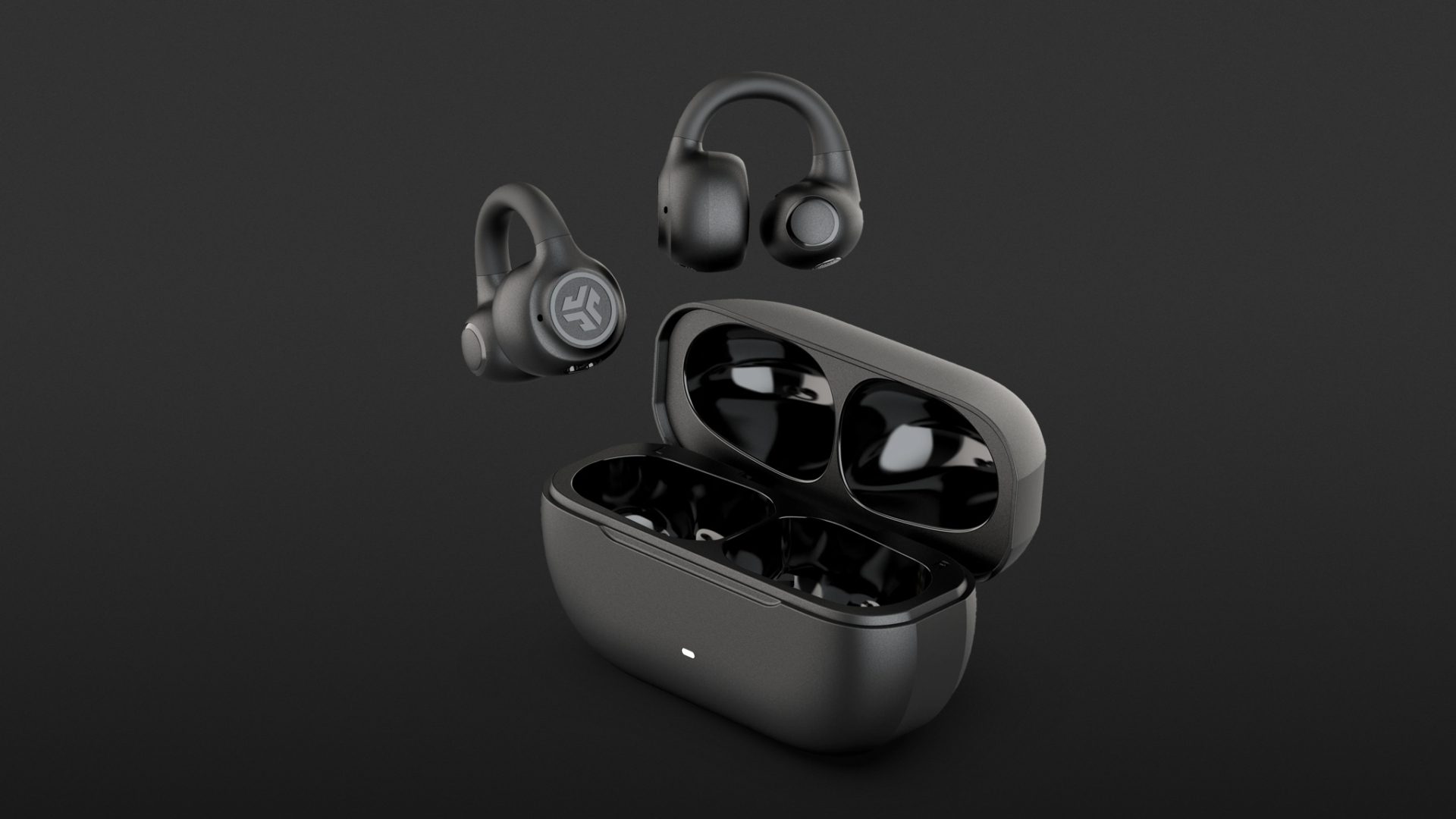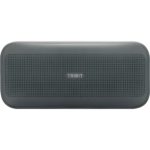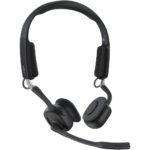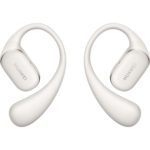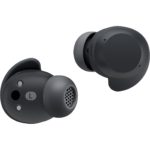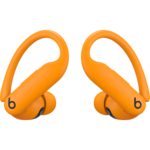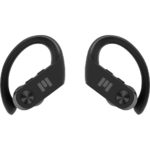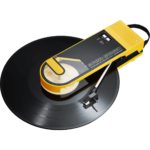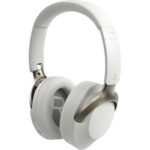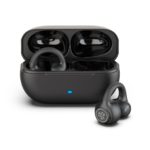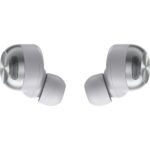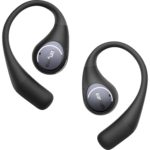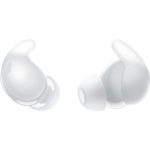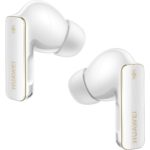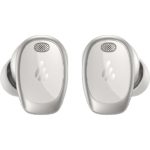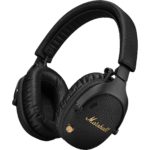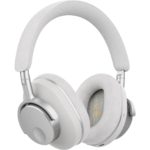With the JLab Flex, the California-based manufacturer offers relatively affordable open-ear headphones that fit comfortably and increase everyday safety by allowing you to remain aware of your surroundings. The compact clip headphones are tuned for fun, support multipoint connections, and can be customized via an app.
- High wearing comfort
- Earbuds are IPX4 water- and sweat-resistant
- Multipoint connections
- Optional hearing protection function
- Support the AAC format
- Build quality could be higher
- No manual power on/off
The JLab Flex are worn similarly to an ear clip, except that the front tip with the driver unit rests in the lower part of the auricle. This design makes it very easy to clip the headphones on or off, allows a flexible fit, and does not exert pressure. In addition, thanks to their compact format and a low weight of six grams per side, they are barely noticeable.
Table of Contents
It was noticeable that the build quality of the JLab Flex does not give a premium impression, as small plastic burrs protrude in some places or edges are not evenly rounded. According to the manufacturer, however, the earbuds are IPX4 water- and sweat-resistant, which should ensure a certain degree of robustness.
Battery Life
At higher volume levels, the JLab Flex achieve a good five and a half hours of runtime per charge. The clip earbuds can be fully recharged in the case twice, making for a total battery life of just under 17 hours. While the earbuds take 90 minutes to fully charge, the case requires two hours and 20 minutes. A short USB-C charging cable is included. There is no USB adapter.
Bluetooth Specs
In addition to Bluetooth version 5.4 and Google Fast Pair, the JLab Flex also support multipoint connections with two devices simultaneously. SBC and AAC are available as audio codecs, although the wireless connection did not seem particularly stable indoors. At most, two rooms on one floor can be traversed, since changing floors quickly results in dropouts, which is unusual. In open areas, on the other hand, a range of 25 meters is possible. The earbuds also feature a low-latency movie mode for videos as well as computer and mobile games.
Controls of the JLab Flex
The rather small touch surfaces of the clip design are located on the tip behind the ear and face toward the body, which can seem slightly cumbersome but works. An advantage is that the configuration can be adapted to personal preferences via the app, and the touch controls can be deactivated if desired.
You can configure single to triple taps and a press-and-hold on each side, which covers a wide range of functions. Options include controlling playback, adjusting volume, calling up a voice assistant, and skipping forward or backward in track selection. In addition, you can switch between three sound modes. Missing, however, is the movie mode. You also have to do without manually turning the earbuds on and off, although single-sided use in solo operation is supported.
JLab App
To adjust the sound of the JLab Flex, two preset EQ curves are available via the app connection (Android and iOS): “JLab Signature,” which is the default setting, and “Balanced.” If desired, you also have the option of using a 10-band equalizer to create your own custom settings, which act as a third sound mode when switching directly on the earbuds. However, you cannot create multiple presets.
Beyond the touch controls, you can set up hearing protection, limiting the maximum playback level to either 85 or 95 decibels. You can also activate or deactivate the movie mode and perform firmware updates.
Call Clarity
Although the JLab Flex do not sound particularly natural when transmitting speech, they are understandable. Wind noise outdoors is mostly filtered out and poses almost no issue, as only stronger gusts arrive at the other end in the form of a slight rustling. This is done well, but it does not work convincingly in a busier background. Unlike wind, louder ambient sounds are not sufficiently reduced, which compromises communication. Moreover, due to the open design, it can be difficult to hear the other party clearly in a noisy environment. In a quiet setting, however, the open-ear design offers benefits, as you can hear your own voice.
Sound of the JLab Flex
The JLab Flex are equipped with dynamic 12 mm drivers and use a special bass-boost algorithm to compensate for the loss of bass frequencies caused by the open-ear design (see our guide). In the powerfully tuned basic sound (JLab Signature), this works quite well, even if no deep bass should be expected. For club-oriented music, the earbuds may not be the best recommendation, as the reasonably substantial bass foundation does not extend very far downward. Otherwise, though, there are barely noticeable differences compared to closed in-ears, especially since these earbuds by no means skimp on listening enjoyment.
There is also sufficient energy in the midrange, which is advantageous in mobile use. Thanks to this assertive quality, voices remain understandable, are reproduced with appealing clarity, and feature a pleasing warmth. Despite the rich sound, the open clip format makes for an engagingly spacious presentation that does not feel overloaded.
The treble reproduction can also create a fairly consistent and harmonious impression. Although the higher frequencies do not hold back but appear present—opening up the sound to good effect—the inherently pleasant sonic character is always evident. Even at higher volume levels, no harshness or unpleasant peaks stand out. There is also no tendency to exaggerate sibilant sounds.
In Balanced mode, the fun-oriented basic sound is complemented by a more balanced tuning. When switching, the listening space noticeably expands, and the virtual stage sits farther back in the room. While the basic sound places voices centrally in the foreground, giving an energetic and direct impression, playback in Balanced mode is no longer so front-facing; instead, it’s more integrated into the overall context. It’s a well-executed alternative that can convey plenty of atmosphere, for instance in live albums or audio dramas.
Conclusion
From a sound standpoint, JLab did many things right with the Flex. Although the open design does mean sacrificing low bass, there is no need to give up good sound and listening enjoyment. The comfort level of the lightweight clip format is also high. In contrast, the weather-resistant open-ear headphones make a modest impression in terms of build quality.
Technical specifications
- Ear couplingOpen-ear
- Typeopen
- Transducer principledynamic
- Frequency response (headphones)20 - 20,000
- Impedance12 ohms
- Weight without cable6 g each, 36 g per case g
What's in the box
- USB-C charging cable
- Charging case
Special features
- BT version: 5.4
- BT codecs: SBC, AAC
- BT profiles: HSP/HFP/A2DP/AVRCP



